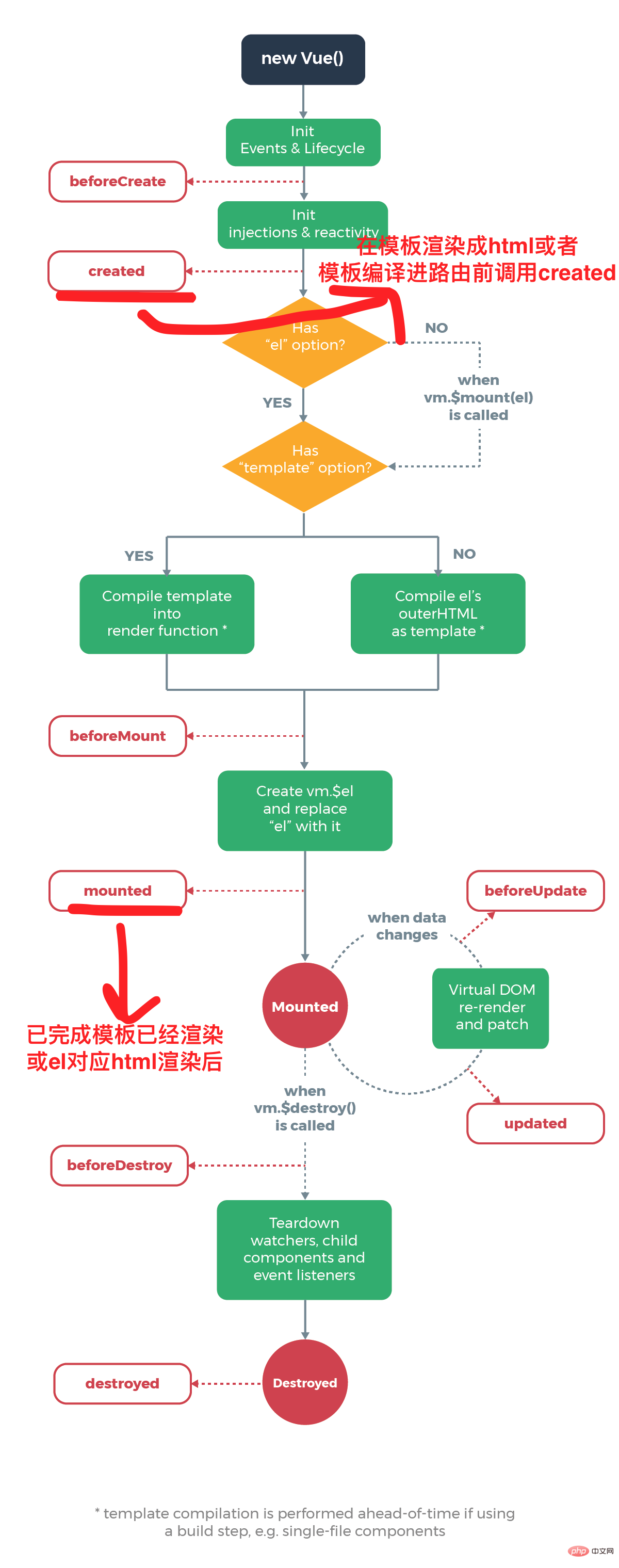
Difference: 1. created is called before the template is rendered into html, that is, certain attribute values are usually initialized and then rendered into a view; mounted is called after the template is rendered into html, usually after the initialization page is completed, and then Perform some required operations on the dom node of html. 2. Some initial configuration of the chart cannot be performed in created. You must wait until the html is rendered before proceeding; however, mounted can.

The operating environment of this tutorial: windows7 system, vue3 version, DELL G3 computer.
In popular language, it is a series of processes that instances or components in Vue go through from creation to destruction. Although it is not rigorous, it is basically understandable.
Through a series of practices, now I have sorted out all the problems encountered, and today I will record the difference between created and mounted:
The official illustration is as follows:

Vue.component("demo1",{
data:function(){
return {
name:"",
age:"",
city:""
}
},
template:"

Okay I saw the first error reported. It was actually because the id could not be found. getElementById(ID) did not find the element. The reasons are as follows:
When created, the html in the view It has not been rendered, so if you directly operate the dom node of the html at this time, you will definitely not find the relevant elements
. In mounted, since the html has been rendered at this time, Therefore, the dom node can be directly operated, so the result "Tang Haoyi" is output.
The above is my own summary of the difference between mounted and mounted. The writing is relatively simple. I will record it to deepen my impression. [Related recommendations:vuejs video tutorial, web front-end development]
The above is the detailed content of What is the difference between mounted and created in vue. For more information, please follow other related articles on the PHP Chinese website!